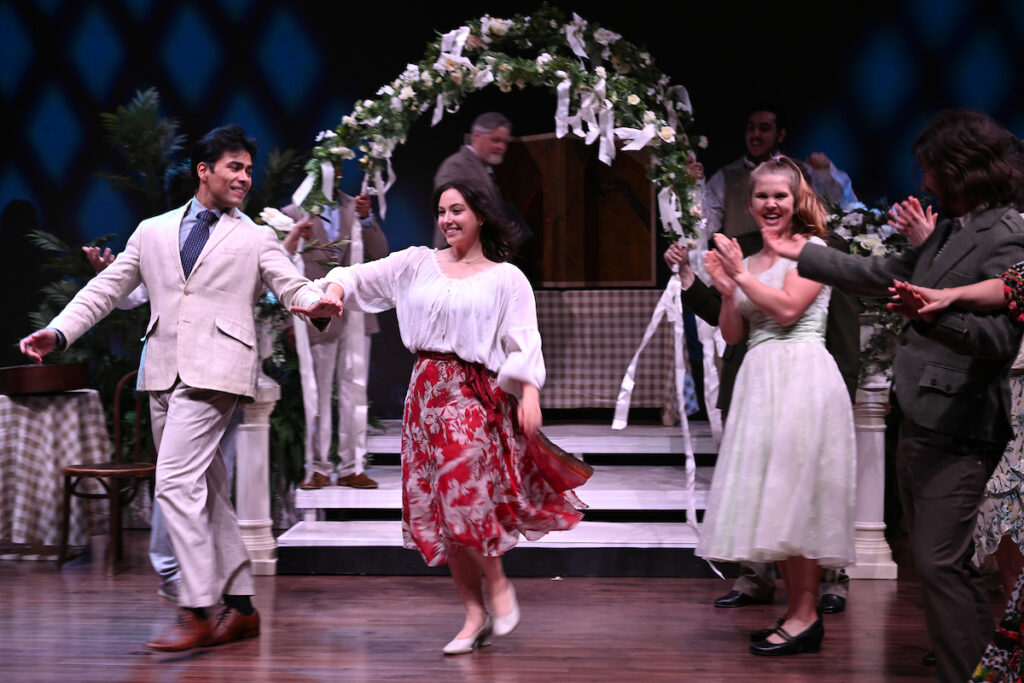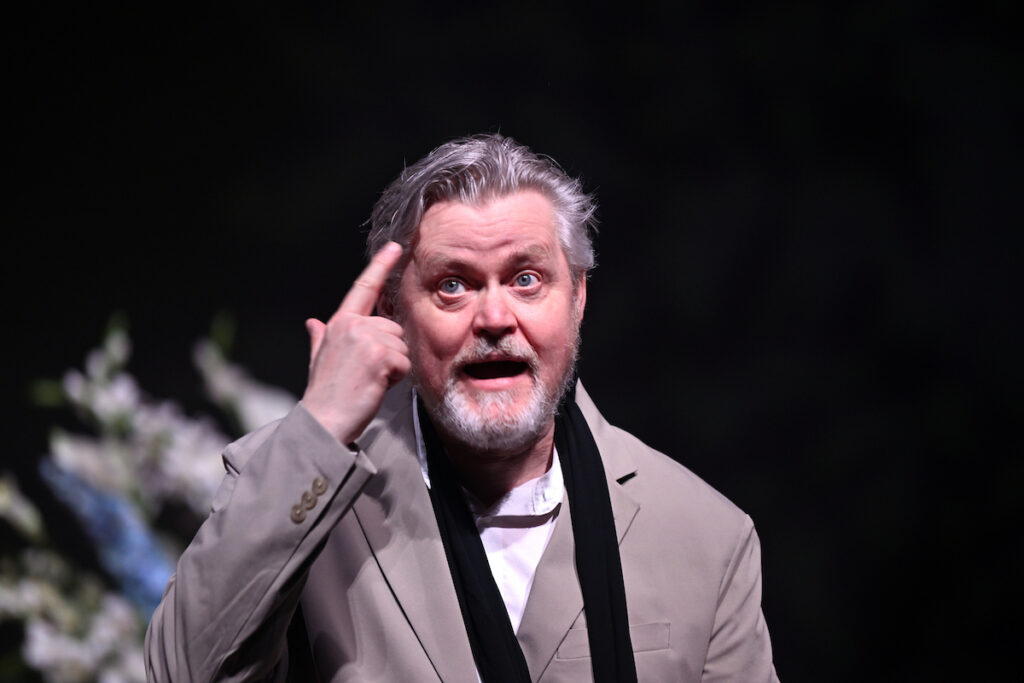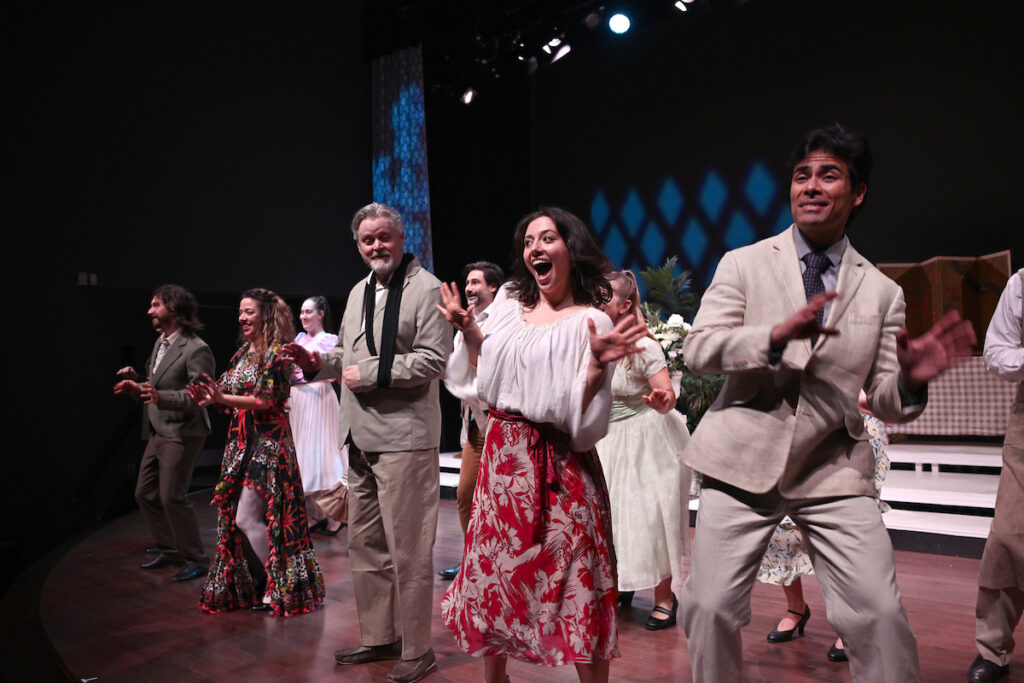

Toronto Operetta Theatre/El Huésped del Sevillano, composed by Jacinto Guerrero, English adaptation and stage direction by Guillermo Silva-Marin, conducted by Kate Carver. Jane Mallet Theatre, May 3 to 5, 2024.
TOT artistic director, Guillermo Silva-Marin, was born in Puerto Rico, so Spanish is his first language. Therefore, he is also familiar with the musical genre zarzuela, which is Spanish language operetta.
As a result, he has, from time to time, programmed a zarzuela for TOT, and so it came to pass that the Canadian premiere of El Huésped del Sevillano (1926) was the company’s final production of the season. As the elegant Spanish consul said in his introductory remarks, Jacinto Guerrero, the composer of the operetta, was the A-team of zarzuela, making him the Spanish Lehar of his day.
I’d like to pause here to shower a little praise on Silva-Marin who is a true polymath. Not only did he found TOT in 1985, which remains Canada’s only professional operetta company, he is the stage director, lighting designer, and set décor artist. Where necessary, he also functions as choreographer.
In the case of El Huésped del Sevillano, Silva-Marin did one more extra step. He translated the operetta’s spoken dialogue, even enriching the content, there being no English version of the text. Is he a one-man band? You bet he is.
The musical numbers were sung in Spanish, and included the complete Guerrero score. Like all operettas of any variety, the arias and ensemble were tuneful and hummable. The attractive score itself sounded modernist, reflecting early 20th century idioms. The music was also not overtly Spanish all the time, though clearly certain numbers contained familiar Spanish rhythms requiring the de rigueur castanets. In other words, Guerrero as a composer felt new, but, at the same time, familiar.
The narrative structure of the operetta is sophisticated. The English translation of the title, El Huésped del Sevillano, is The guest at the Inn, and that guest was none other than the celebrated poet and soldier, Miguel de Cervantes Saavedra (Sean Curran). He is the narrator who with a mix of irony, sarcasm and wit, propels the story. And as a clever nod to truth, Curran had his left arm in a sling indicating the severe injury Cervantes suffered at the Battle of Lepanto in 1571.
The operetta is set in Toledo, and the premise of the libretto is that Cervantes is writing a new comedy, and uses the people in and around the inn as his inspiration. His role as Huesped, or guest, is to interrupt the story from time to time with wry observations in general, and clever commentary on the characters in particular, and in this very important speaking role, Curran was simply superb. (He also happens to be a talented baritone.)
The male lead is Juan Luis (tenor Tonatiuh Abrego), a court artist commissioned by the king to paint a picture of the Immaculate Virgin for the Royal Oratory. His search to find the perfect model has brought him to Toledo, where he finds his muse in Raquel (soprano Lucia Santilly), the daughter of a famous sword maker. Of course they fall in love. The villain of the piece is Count Don Diego (baritone Stuart Graham), a lecherous nobleman who kidnaps Raquel and keeps her prisoner in the inn.

The comic subplot concerns Rodrigo (tenor Alexander Cappellazzo), Juan Luis’ assistant, and his romance with the kitchen maid Constancia (mezzo-soprano Diana Di Mauro). The problem is that when Rodrigo was once shipwrecked, he swore an oath that if he survived, he would marry the plainest woman he could find, the problem being, that Constancia is not plain. There are also all kinds of smaller roles in the operetta performed by seven of the nine member chorus who all acquitted themselves well.
On a point of trivia, the operetta is supposed to take place in the 16th century, but costume-wise, that was not going to happen. Instead, the young women raided their closets to find peasant-like dresses, blouses and skirts. The upper crust men wore light-coloured summer suits, while the lesser vessels sported some rented tunic vests over white shirts. Surprisingly and collectively, it did evoke Spain.
It should be pointed out that Guerrero wrote a tortuous sing for Juan Luis and Raquel in terms of high notes, but both performers were, more or less, up to the task. Abrego has a very commanding voice that instantly captures your ear, albeit on the light side. Nonetheless, it shimmers with beauty. Santilly’s high register is just this side of shrill, but, overall, she sports a soprano that is purity of sound.
Cappellazzo is another pleasant sounding light tenor but he sang with a hearty vigor that belied his fach. Unfortunately, Di Mauro is one of those mezzo-sopranos whose voice, while attractive, lacks oomph. She was lost in the ensembles.
The music director was Kate Carver, a seasoned opera coach and accompanist, who conducted from the keyboard. She really found the infinite variety in Guerrero’s music, and produced a rich sound from her nine-member ensemble. Her chorus of singers was also well-schooled. In a surprising move, the musicians were on the side of the stage, rather than in the pit, which perhaps gave a fuller sound.
We can’t leave this discussion of El Huésped del Sevillano without talking about a section in Act Two called Nocturne which featured an intercutting of narration with music.
Cervantes, in glorious purple prose, rhapsodizes about the beauty of Toledo. He then riffs into the mystique of Spain itself, how it captivates and enchants. Each section of his paean was followed by a short section of instrumental music which carried the spirit of his words. The operetta comes to an abrupt stop as this ode is played out, but it truly was mesmerizing – the beautiful sentiments followed by interludes of intensely romantic music.
What made El Huésped del Sevillano particularly interesting, was the clever use of Cervantes as narrator and the gorgeous Nocturne section. Both were genuine surprises, but much appreciated.

